Caring For Multiple Cats: Tips For A Harmonious Multi-Cat Household
In this article, you will discover essential tips for maintaining a harmonious environment in a multi-cat household. Whether you have recently adopted a new furry friend or have been living with multiple cats for years, creating a peaceful coexistence can be a challenge. From establishing territory to managing feeding routines, these practical suggestions will help you ensure that all your feline companions thrive in a loving and balanced home.
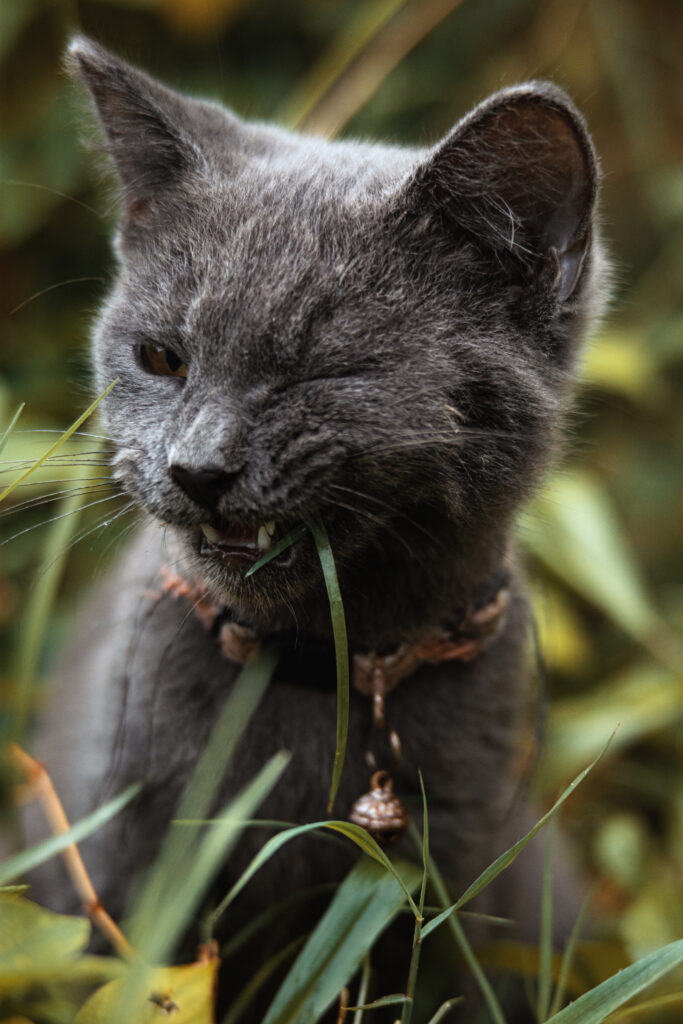
This image is property of images.pexels.com.
Click here to Understand & Speak With Your Cat!
Provide Sufficient Resources for Each Cat
Having enough resources is essential when it comes to maintaining a harmonious multi-cat household. This means ensuring that each cat has their own designated litter box, food and water bowls, scratching posts, and toys for enrichment.
Litter Boxes
Litter boxes are a crucial resource for cats, and it’s important to provide one for each cat in the household, plus an extra. Cats prefer to have their own space to eliminate and may become stressed or have territory issues if forced to share a litter box. Place the litter boxes in different areas of the house to prevent any conflicts or competition.
Food and Water Bowls
Just like with litter boxes, it’s essential to provide individual food and water bowls for each cat. Cats can be quite particular about their eating habits and may become agitated if their food is being eaten or their water is being monopolized by another cat. Place the bowls in separate areas to ensure each cat has easy access to their own food and water.
Scratching Posts
Scratching is a natural behavior for cats, and providing scratching posts for each cat can help prevent furniture damage and alleviate stress. Make sure the scratching posts are sturdy and tall enough for your cats to fully stretch and scratch. Having multiple scratching posts throughout the house will allow each cat to find their preferred spot and avoid any potential conflicts.
Toys and Enrichment
Enrichment is crucial to a cat’s overall well-being and can help prevent boredom and unwanted behavior. Provide a variety of toys for each cat, including interactive toys, puzzle feeders, and catnip toys. Rotate the toys regularly to keep things interesting and engage your cats in playtime sessions to encourage exercise and mental stimulation.
Establish a Consistent Feeding Schedule
Maintaining a consistent feeding schedule is vital for the overall health and well-being of your cats. It helps regulate their appetite, prevents obesity, and reduces the chances of food-related conflicts.
Why Feeding Schedule is Important
A feeding schedule provides structure and routine for your cats. It ensures that they receive their meals at the same time every day, preventing overeating and promoting a healthy weight. Additionally, a consistent feeding schedule can help prevent food aggression and minimize the chances of one cat stealing another’s food.
How to Establish a Feeding Schedule
Start by determining how many meals your cats need per day based on their age, health status, and dietary requirements. Divide their daily recommended amount of food into appropriate portions and establish set meal times. Feed your cats in separate areas to avoid any potential conflicts during feeding time.
Feeding Multiple Cats Simultaneously
If you have multiple cats, it can be challenging to feed them simultaneously without causing conflicts. One solution is to provide separate feeding stations in different areas of the house. This allows each cat to eat in peace and eliminates the competition for food. Alternatively, you can use interactive feeding toys or puzzle feeders to engage your cats mentally and slow down their eating pace.
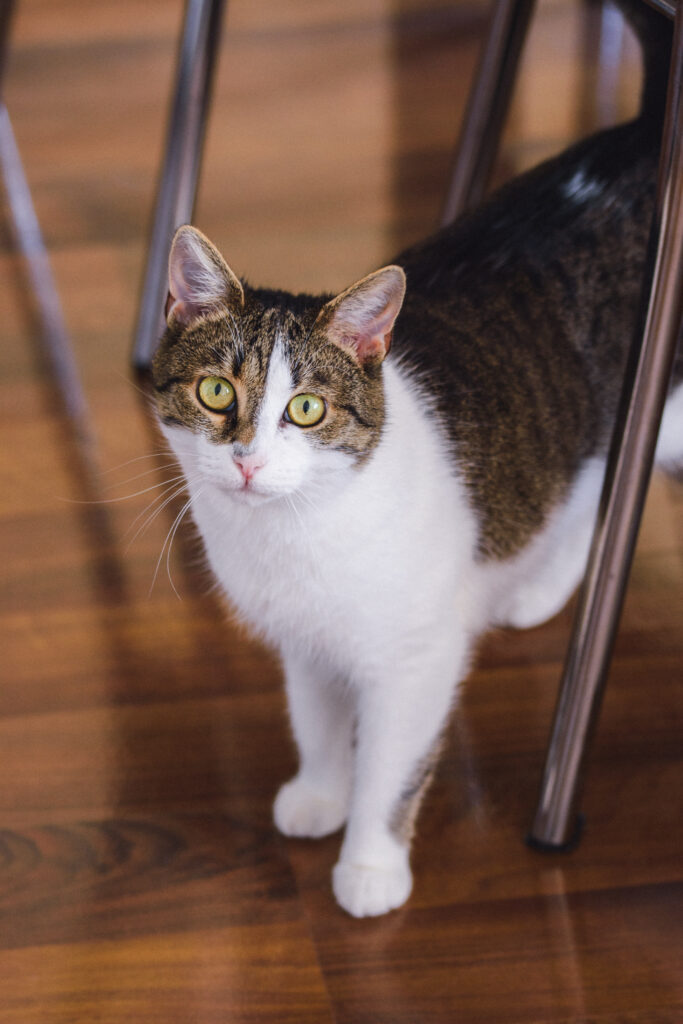
This image is property of images.pexels.com.
Click here to Understand & Speak With Your Cat!
Create Separate Rest Areas
Cats value their personal space, and providing separate rest areas for each cat can help reduce stress and potential conflicts within a multi-cat household.
Importance of Individual Rest Areas
Just like humans, cats need their own space to relax and unwind. Having separate rest areas enables each cat to have a safe retreat where they can relax without feeling threatened or disturbed by other cats in the household. This can significantly reduce tension and promote peace within the home.
Designing Separate Rest Areas
Designing separate rest areas can be as simple as providing individual cat beds or designated areas in different rooms of the house. Each cat should have a comfortable and cozy space that they can call their own. Ensure that the rest areas are located in quiet and low-traffic areas to create a serene environment for your cats to rest undisturbed.
Encouraging Cats to Use their Own Rest Areas
It’s important to introduce and familiarize your cats with their designated rest areas. Place familiar and comforting items, such as their preferred bedding or a piece of clothing with your scent, in their rest areas. Additionally, provide vertical options, such as cat trees or shelves, near the rest areas to cater to your cat’s natural inclination for climbing and observing their surroundings.
Introduce Cats Gradually
When adding a new cat to your household, gradual introductions are crucial to ensure a smooth transition and minimize potential conflicts between new and existing cats.
Why Gradual Introductions are Necessary
Cats are territorial animals and may see new additions as intruders in their established territory. Introducing a new cat too quickly can result in stress, fear, and territorial aggression. Gradual introductions allow the cats to become familiar with each other’s scent and presence, reducing the chances of aggressive behavior and promoting acceptance.
Choosing a Suitable Introduction Method
The most common method for gradual introductions is scent swapping. Start by rubbing a cloth or towel on one cat and then introduce it to the other cats in the household. Allow the cats to investigate the scent and become accustomed to it. Gradually progress to visual introductions by using a baby gate or barrier, allowing the cats to see each other without physical contact. Finally, when the cats show signs of comfort and positive body language, you can progress to supervised face-to-face interactions.
Monitoring Interactions during Introductions
During the introduction period, it’s crucial to closely observe the cats’ behaviors and body language. Look for signs of fear, aggression, or excessive stress. If any of the cats display aggressive behavior or signs of distress, it’s essential to separate them and consult with a professional behaviorist if needed. Patience and gradual introductions are key to a successful multi-cat household.
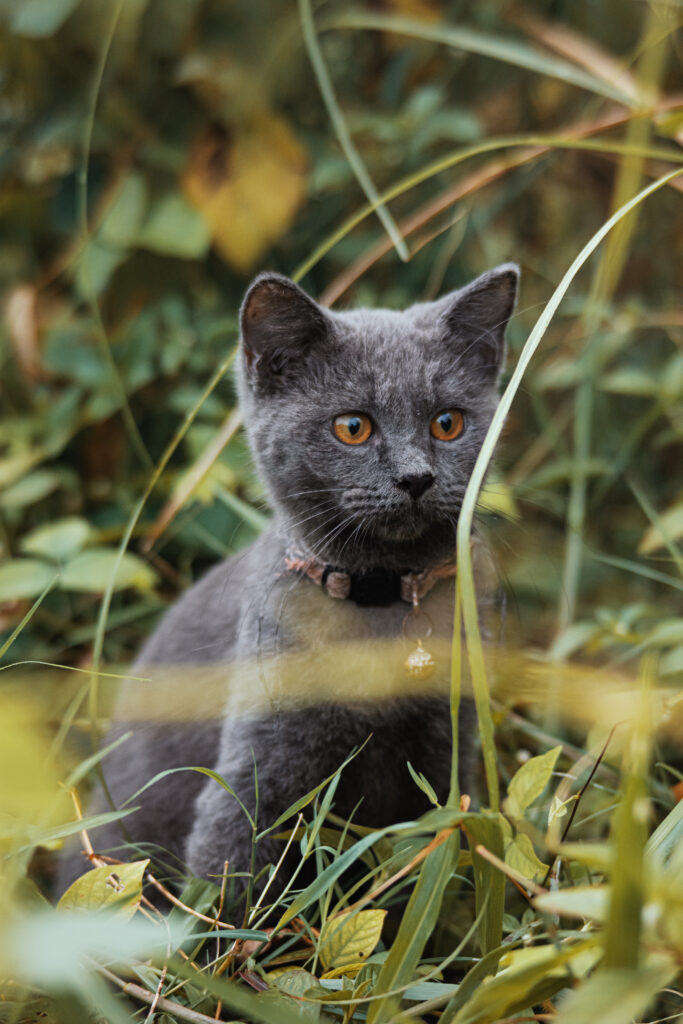
This image is property of images.pexels.com.
Click here to Understand & Speak With Your Cat!
Provide Vertical Space
Vertical space is an often overlooked resource in a multi-cat household, but it plays a vital role in cats’ natural behavior and territory management.
Importance of Vertical Space for Cats
Cats are natural climbers and feel more secure when they have vertical vantage points. Vertical space allows them to observe their surroundings, escape from potential conflicts, and establish their territory. Providing ample vertical options helps minimize competition for resources and create a more harmonious living environment for multiple cats.
Ways to Incorporate Vertical Space in a Multi-Cat Household
There are various ways to incorporate vertical space in your home. Cat trees, shelves, and wall-mounted perches are excellent options that provide cats with elevated vantage points. Install them near windows or in areas where cats spend most of their time to maximize their use. Ensure the vertical spaces are sturdy and easily accessible to all cats, including those with mobility limitations.
Vertical Space Guidelines
To accommodate multiple cats, it’s important to have enough vertical space to avoid conflicts. Aim for a minimum of one vertical option per cat, but ideally provide several choices throughout the house. This allows each cat to claim their preferred spot and avoid potential clashes. Vertical space also creates opportunities for exercise and mental stimulation, enhancing the overall well-being of your cats.
Prevent and Manage Litter Box Issues
Litter box problems can be a major source of stress and conflict in a multi-cat household. Taking steps to prevent and manage litter box issues is crucial for maintaining a harmonious environment.
Common Litter Box Problems
Issues such as inappropriate elimination, refusal to use the litter box, or consistent elimination outside the litter box can indicate litter box problems. These issues may arise due to factors such as insufficient litter box options, inappropriate litter type, dirty or overcrowded litter boxes, or underlying medical conditions. Addressing these problems promptly is essential to prevent them from escalating and causing tension among your cats.
Maintaining Clean Litter Boxes
Cleanliness is paramount when it comes to litter boxes. Cats are clean animals and prefer a pristine litter box environment. Scoop the litter boxes at least once a day and completely change the litter on a regular basis. Use unscented litter, as some cats may be sensitive to fragrances. Adequate litter box maintenance ensures that each cat has a hygienic space to eliminate, reducing the chances of litter box issues.
Dealing with Litter Box Challenges
If you encounter litter box challenges in a multi-cat household, it’s important to address them promptly. Provide multiple litter boxes in different locations, following the “one box per cat, plus one” rule. This ensures that each cat has sufficient options and can avoid potential conflicts when using the litter box. If a cat consistently eliminates outside the litter box, consult with your veterinarian to rule out any underlying medical conditions and seek advice from a professional behaviorist if needed.
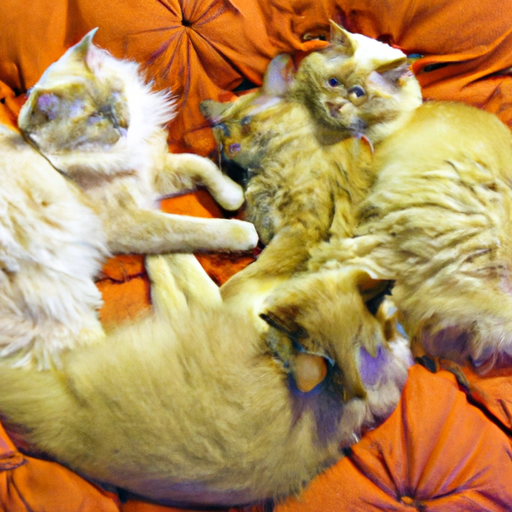
Click here to Understand & Speak With Your Cat!
Manage Potential Conflicts
In a multi-cat household, it’s essential to be aware of cat body language, recognize signs of conflict or aggression, and intervene when necessary to prevent escalated tensions.
Understanding Cat Body Language
Cats communicate through body language, and observing their behaviors can provide valuable insights into their emotions and intentions. Pay attention to cues like raised fur, arched backs, dilated pupils, and aggressive postures. Understanding your cats’ body language allows you to identify potential conflicts and take appropriate action to diffuse the situation.
Signs of Conflict or Aggression
Signs of conflict or aggression among cats may include hissing, growling, swatting, yowling, or chasing. These behaviors can escalate quickly, leading to physical altercations or prolonged tension within the household. Prompt intervention is crucial to preventing injuries and maintaining a peaceful environment.
Intervening in Conflicts
When you witness signs of conflict or aggression among your cats, it’s important to intervene calmly and efficiently. Use distractions such as loud noises or water sprays to redirect their attention away from each other. Separate the cats involved in the conflict and give them time to calm down. If conflicts persist or escalate, seek advice from a professional behaviorist who can provide personalized guidance and solutions.
Regular Veterinary Care
Regular veterinary care is indispensable for maintaining the health and well-being of all your cats. Scheduled check-ups, vaccinations, and preventive care are essential components of responsible cat ownership.
Importance of Regular Check-ups
Regular veterinary check-ups allow for early detection of potential health issues and ensure that your cats receive the necessary vaccinations, parasite prevention, and routine care. Cats are known to hide signs of illness, and regular check-ups provide an opportunity for your veterinarian to assess their overall health and address any concerns.
Vaccinations and Preventive Care
Vaccinations are vital for protecting your cats against common infectious diseases. Consult with your veterinarian to determine the appropriate vaccination schedule based on your cats’ lifestyle and risk factors. Additionally, regular preventive care, such as flea and tick prevention, deworming, and dental care, helps maintain your cats’ overall health and prevents any potential health issues from escalating.
Addressing Health Issues Promptly
If you notice any changes in your cats’ behavior, appetite, or litter box habits, it’s important to seek veterinary attention promptly. Even subtle changes can indicate underlying health issues that require medical intervention. Regular veterinary care, combined with attentive observation of your cats’ well-being, is crucial for the early detection and management of health issues in a multi-cat household.
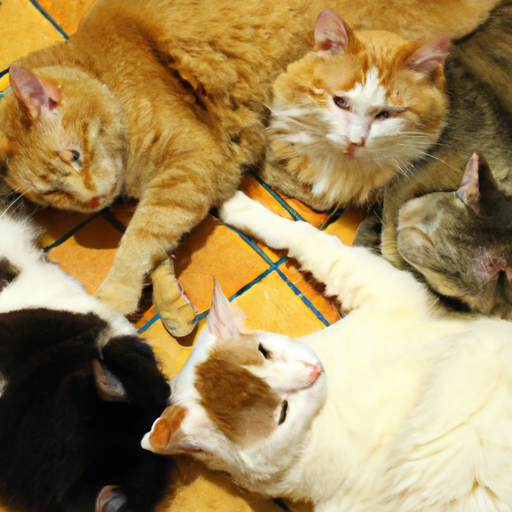
Click here to Understand & Speak With Your Cat!
Maintain a Peaceful Environment
Creating a peaceful environment is key to maintaining harmony among multiple cats. Minimizing stressors, providing hiding places, and utilizing pheromone therapy can significantly contribute to a calm and stress-free atmosphere.
Reduce Stressors
Identify and eliminate potential stressors in your home that may negatively impact your cats’ well-being. These can include loud noises, excessive commotion, abrupt changes in routine, or lack of privacy. Maintaining a calm environment helps reduce stress levels and promotes a sense of security for your cats.
Provide Hiding Places
Cats appreciate having hiding places where they can retreat when feeling threatened or overwhelmed. Provide cozy hiding spots such as cat tunnels, covered beds, or elevated perches. These hiding places give your cats a safe space to escape to and help alleviate stress and potential conflicts.
Pheromone Therapy
Pheromone therapy, such as Feliway, can be beneficial in promoting a calming environment for cats. Synthetic pheromones mimic natural feline facial pheromones, creating a sense of familiarity and security. These diffusers or sprays can be used to help reduce stress-related behaviors and create an overall tranquil atmosphere in a multi-cat household.
Consider the Number of Cats
When deciding to add a new cat to your household, it’s important to consider the number of cats already in your home and the potential impact on the overall harmony.
Ideal Number of Cats for a Harmonious Household
The ideal number of cats for a harmonious household varies depending on individual circumstances and resources available. While some cats may thrive in a multi-cat environment, others may prefer a single-cat household. Factors such as the cats’ personalities, space availability, and your ability to provide individual attention and resources to each cat should be taken into consideration.
Factors to Consider before Adding a New Cat
Before adding a new cat to your household, evaluate the dynamics and personalities of your existing cats. Consider their age, activity levels, and tendencies towards socializing. Introduce a new cat gradually and ensure that you have sufficient resources, space, and time to meet the needs of all the cats in your household.
Seeking Professional Advice
If you’re unsure about whether to add a new cat to your household or experiencing conflicts among your existing cats, seeking professional advice is highly recommended. A professional behaviorist or veterinarian can assess your specific situation, provide guidance on cat compatibility, and offer strategies to ensure a harmonious multi-cat household.
In conclusion, caring for multiple cats and maintaining harmony in a multi-cat household requires careful attention to each cat’s individual needs, sufficient resources, a consistent feeding schedule, and gradual introductions. Providing vertical space, managing potential conflicts, and maintaining regular veterinary care are essential components of responsible cat ownership. By creating a peaceful environment and considering the number of cats you can comfortably accommodate, you can foster a harmonious and happy home for all your furry companions.









